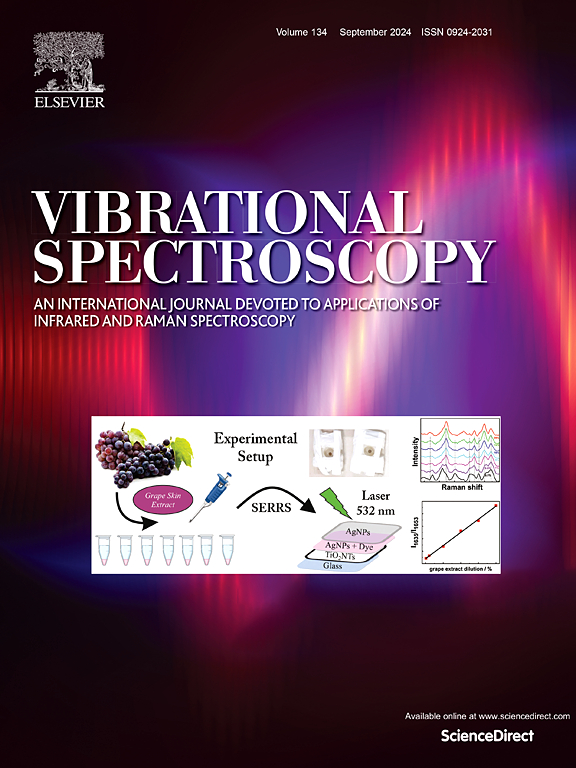The use of NIR spectroscopy for the quantification of water content and compositional analysis in compressed gas-systems
IF 3.1
3区 化学
Q2 CHEMISTRY, ANALYTICAL
引用次数: 0
Abstract
The use of Near Infrared Spectroscopy (NIRS) has a significant potential to enable the detection and quantification of natural gas components (e.g., CH4, CO2, moisture). It offers a quick, non-invasive, and non-destructive approach, eliminating the challenges associated with traditional sampling methods. Here, we investigated the applicability of the NIR technique to perform accurate quantification of water content and compositional analysis regarding CH4 and CO2 in compressed systems. The system’s pressure is also considered a response variable. The spectra collection was made at room temperature (298.15 K), with pressures up to 120 bar and CO2 concentrations varying from 0 % to 50 % of the total composition. The Partial Least Squares (PLS) was used as the regression method, and the Quartz Crystal Microbalance (QCM) as the reference technique for water content. The PLS models yielded high accuracy, with R² values of 0.990 for CH₄, 0.993 for CO₂, and 0.947 for H₂O, with RMSEP values of 4.43 %, 3.55 %, and 8.35 %, respectively. Although water estimation showed slightly higher deviation, it remained within the experimental uncertainty range of the QCM reference. These results confirm the feasibility of applying NIRS for real-time, multi-component gas analysis in industrial settings
近红外光谱法用于压缩气体系统中水含量的定量和成分分析
近红外光谱(NIRS)在天然气成分(如CH4、CO2、水分)的检测和定量方面具有巨大的潜力。它提供了一种快速、非侵入性和非破坏性的方法,消除了与传统采样方法相关的挑战。在这里,我们研究了近红外技术对压缩系统中CH4和CO2的含水量和成分分析进行精确定量的适用性。系统的压力也被认为是一个响应变量。光谱采集在室温(298.15 K)下进行,压力高达120 bar, CO2浓度在总组成的0 %到50 %之间变化。采用偏最小二乘法(PLS)作为回归方法,石英晶体微天平(QCM)作为水分含量的参考技术。PLS模型具有较高的准确度,对CH₄、CO₂和H₂O的R²值分别为0.990、0.993和0.947,RMSEP值分别为4.43 %、3.55 %和8.35 %。水分估算偏差略大,但仍在QCM参考的实验不确定度范围内。这些结果证实了在工业环境中应用近红外光谱进行实时、多组分气体分析的可行性
本文章由计算机程序翻译,如有差异,请以英文原文为准。
求助全文
约1分钟内获得全文
求助全文
来源期刊

Vibrational Spectroscopy
化学-分析化学
CiteScore
4.70
自引率
4.00%
发文量
103
审稿时长
52 days
期刊介绍:
Vibrational Spectroscopy provides a vehicle for the publication of original research that focuses on vibrational spectroscopy. This covers infrared, near-infrared and Raman spectroscopies and publishes papers dealing with developments in applications, theory, techniques and instrumentation.
The topics covered by the journal include:
Sampling techniques,
Vibrational spectroscopy coupled with separation techniques,
Instrumentation (Fourier transform, conventional and laser based),
Data manipulation,
Spectra-structure correlation and group frequencies.
The application areas covered include:
Analytical chemistry,
Bio-organic and bio-inorganic chemistry,
Organic chemistry,
Inorganic chemistry,
Catalysis,
Environmental science,
Industrial chemistry,
Materials science,
Physical chemistry,
Polymer science,
Process control,
Specialized problem solving.
 求助内容:
求助内容: 应助结果提醒方式:
应助结果提醒方式:


